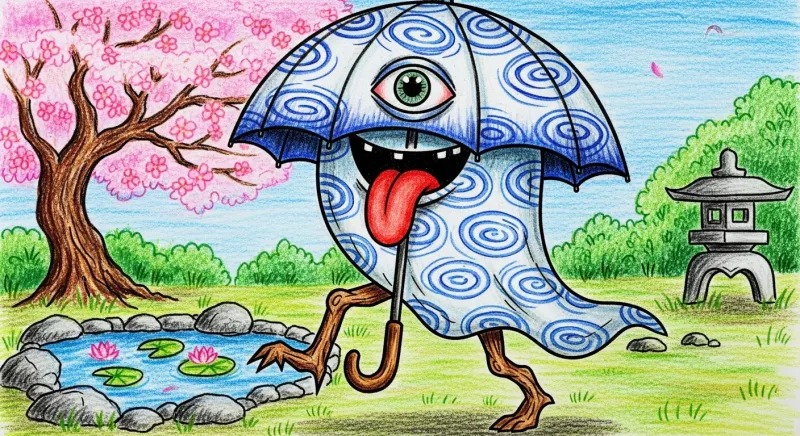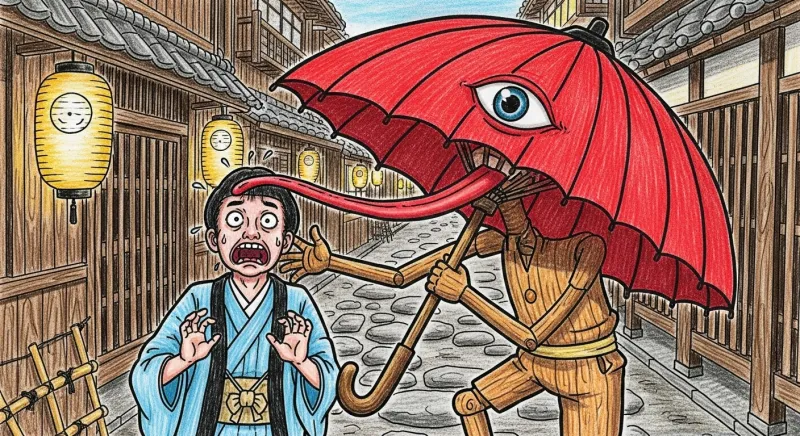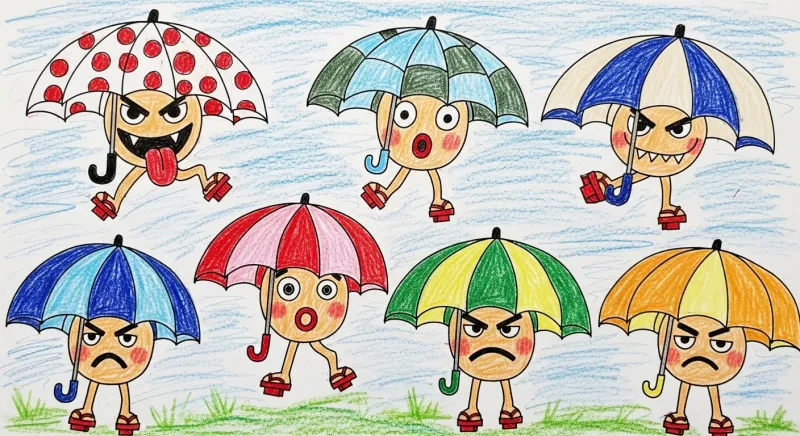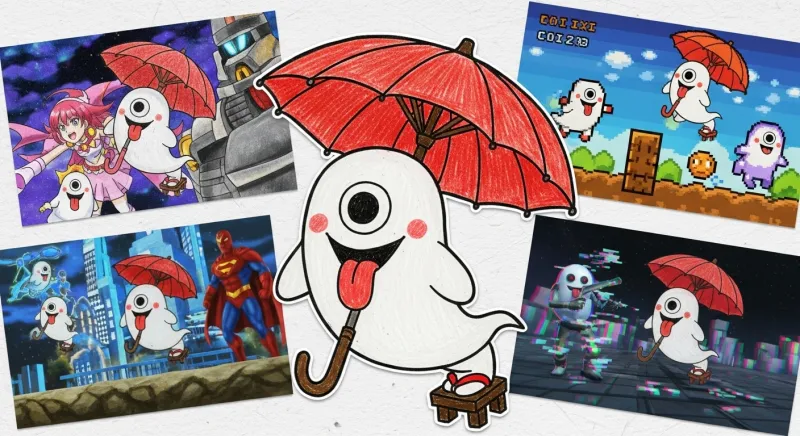Kasa-obake: The Haunted Umbrella of Japan
Published on July 19, 2025

The Whimsical World of Kasa-obake
Have you ever wondered if your old umbrella might spring to life when you're not looking? In the rich tapestry of Japanese folklore, this whimsical idea is a fascinating supernatural belief. [3] The Kasa-obake (傘おばけ), or haunted umbrella, is one of the most recognizable and charming spirits, known as yōkai, in Japan. [2, 4] These animated parasols, with their single eye and protruding tongue, have captivated the imagination of generations. [3]

The Birth of an Object Spirit
Kasa-obake are a type of tsukumogami, which are everyday objects that are believed to come to life after 100 years of existence. [4, 5] This belief is deeply rooted in Japanese animism and the Shingon Buddhist idea that even inanimate objects can possess a soul. [1, 10, 11] The transformation into a tsukumogami is often triggered when an object is old and has been neglected or discarded. [10] The Kasa-obake, therefore, is born from an old, forgotten, or broken oil-paper umbrella. [3, 5] Other names for this yōkai include 'karakasa-obake' (から傘おばけ), 'kasa-bake' (傘化け), and 'karakasa kozō' (唐傘小僧). [2]
A Playful Prankster
Unlike more malevolent spirits in Japanese folklore, the Kasa-obake is generally considered a harmless and playful trickster. [3, 5] They are known for their mischievous behavior, which includes sneaking up on unsuspecting humans and delivering a big, oily lick with their long tongues. [13, 19] They delight in surprising people by suddenly appearing and making strange noises. [1] While startling, these encounters are typically seen as more eerie than dangerous. [12] Their goal is to have fun and play pranks, not to cause any real harm. [6]

Distinctive Appearance
The most common depiction of a Kasa-obake is an oil-paper umbrella with a single large eye, a long lolling tongue, and one or two spindly legs it uses to hop around. [3, 9] Some variations in older art, such as the Hyakki Yagyō Emaki (Scroll of the Night Parade of One Hundred Demons) from the Muromachi period, show them with two feet. [2] Edo period illustrations solidified the one-legged image that is most popular today. [4]

Cultural Significance and Modern-Day Appearances
The Kasa-obake serves as a reminder of the Japanese concept of mottainai, which is the feeling of regret concerning waste. [3] The idea that a discarded object could come back as a yōkai encourages respect for one's belongings. [13, 18] Although the Kasa-obake does not appear in any specific folklore tales as a major character, it has become one of the most well-known and beloved yōkai. [2] Its popularity surged after World War II, and it has since become a frequent character in anime, manga, video games, and other forms of popular culture. [4]
Notable appearances include the anime series GeGeGe no Kitarō and Yokai Watch, as well as video games like the Super Mario series, The Legend of Zelda: Majora's Mask, and the Touhou Project series. [3, 4, 7]

References
- Meet the Umbrella Yokai: Japan's Most Playful Tsukumogami | Wakoku
- Tsukumogami - japan box
- Kasa-obake - Wikipedia
- Tsukumogami: A type of yokai from Japanese folklore, believed to be objects that have come to life after 100 years of existence
- Kasa-obake - Gods and Monsters
- Kasa-Obake - 5th Edition SRD
- Kasa-obake – JAPAN BOX